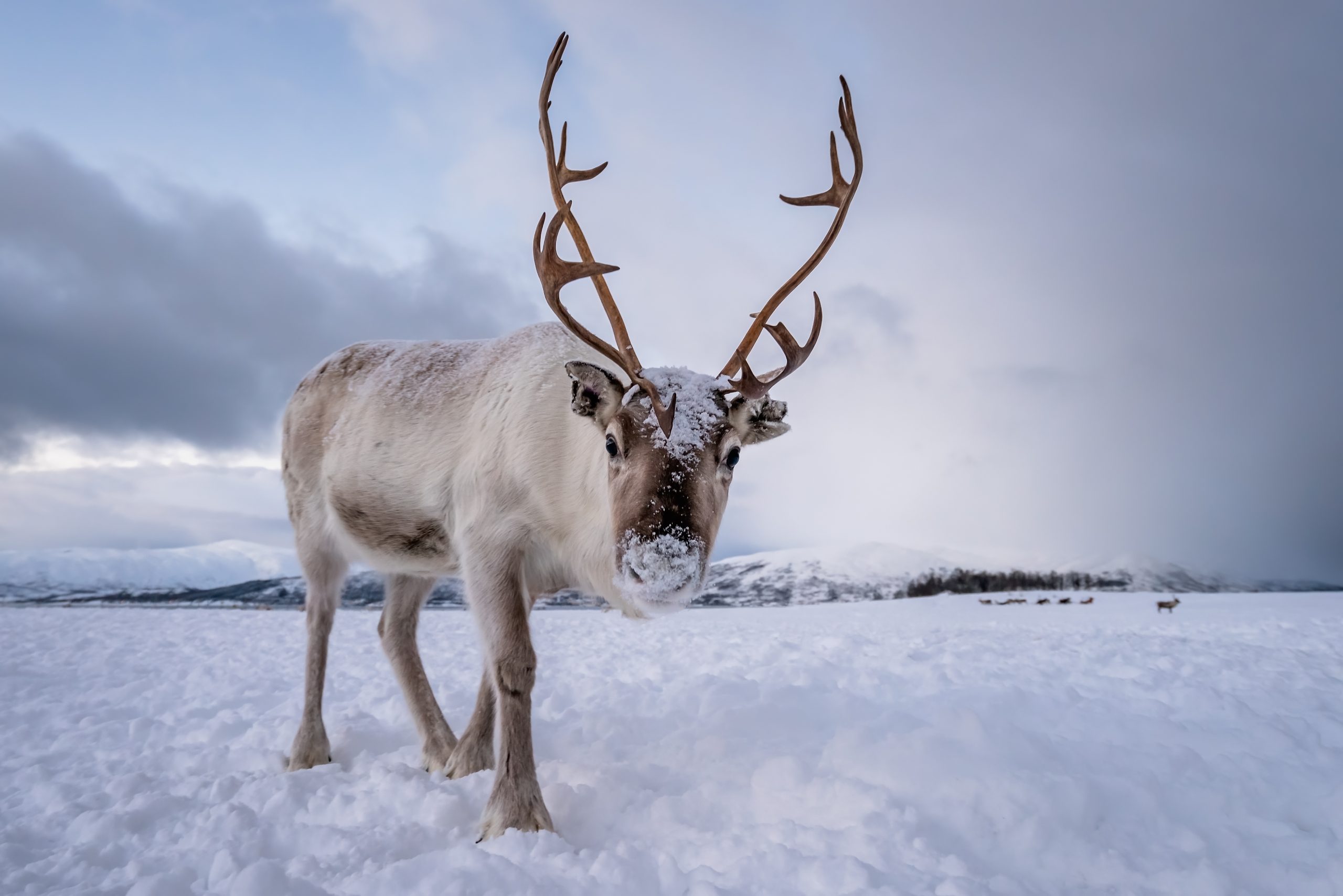Reindeer: Santa’s perfect helpers!

A ’must’ of every Christmas landscape, reindeer are iconic inhabitants of taiga, tundra and other cold habitats throughout the circumpolar region. They form an important part of the livelihoods of many Arctic communities. The name ’caribou’ has traditionally been used in North America to distinguish free-roaming herds from domesticated reindeer. Thanks to new genetic analysis, we can now identify several distinct groups, not all of which have been named yet. Some may even be classified as separate species. The IUCN regards the entire reindeer complex as Vulnerable to extinction; some may already have become extinct, while others are declining or extremely rare. Only a few have stable populations across their range. As well as being adversely affected by climate change and habitat loss, reindeer are threatened by disease outbreaks in North America and more recently in Europe.
While some populations are stationary, migratory herds may travel up to 5,000 km (3,000 miles) to find food throughout the winter. Reindeer are unique because females as well as males may grow antlers. As an adaptation to their freezing cold habitats, their circulation and respiration are all about conserving body heat. Their nose is special: built on so-called turbinate bones, specific nostrils and specialized blood-vessels in their nasal passages make reindeer noses vividly red inside (though not on the outside!), while their keen sense of smell allows them to sniff out mosses and lichens under thick layers of snow. Reindeer are swift, and their physical features are adapted to roaming through snowfields: their thick fur coat made up of hollow hairs and their extremely wide hooves help them cross rivers and lakes. Santa could not have found a better equipped animal for pulling his sleigh.
By Aniko Zolei
